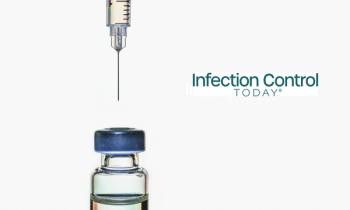
The Clean Bite: Real Talk About Infection Control: Dental Unit Water Line Safety
Hey Clean Biters! What’s flowing through your lines? Make DUWL safety automatic: appoint a Safety Officer, write a one-page SOP, treat daily, shock monthly, test quarterly, and document <500 CFU/mL. Grab the log—clean water, every patient, every time.
Hey there, Clean Biters!
Welcome back to The Clean Bite! I’m your host, Sherrie, and today we’re diving into a topic that’s often overlooked but absolutely critical: Dental Unit Water Line (DUWL) safety. Yes, the water used during your dental visit is just as important as the treatment itself!
Why Water Safety Matters in Dentistry
I recently read a fantastic article by Ivan W. Gowne, MS, MLS(ASCP)CM, CIC, FAPIC, in
Have you ever asked your dental office how they maintain the water used during your cleaning, filling, or crown procedure? If not, now’s the time.
Biofilm: The Hidden Threat
In both nursing homes and dental offices, biofilm is the common enemy.
However, dental offices face a unique challenge due to the small diameter and long length of DUWLs—the perfect storm for biofilm to thrive.
Let me take you back...
A Personal (and Gross) Story
Years ago—before I knew better—I was cleaning my operatory after a patient visit. My air/water syringe wasn’t working properly, so I took it apart. What did I find?
A slime worm bubbling out of the line.
I was horrified. I cleaned that one line with bleach water and blew it out, but I had no idea what was lurking in the rest of the unit.
Fast forward to today: DUWL safety is finally getting the attention it deserves.
State Regulations Are Catching Up
In July 2025, the Georgia Dental Board updated its rules to include written DUWL safety requirements, joining Washington and California in this critical effort. Shoutout to my friends at
Step 1: Make a Plan
Every dental office needs a DUWL Safety Plan. Here’s how to build one:
Appoint a Safety Officer
Select someone who understands the scope and has the full support of the dentist and office manager. This person will oversee the program, training, and documentation.
Create a Standard Operating Procedure (SOP)
Your SOP should include:
What
- Why DUWL maintenance matters (Hint: Keep biofilm <500 CFU!)
- Products used + customer support contacts
- Responsible team member
- Effective date + review date
- Remediation plan for test failures or boil water advisories
- Signatures from the dentist and the office manager
When
- Daily: Use Environmental Protection Agency-compliant source water
- Daily: Treat water with each bottle refill
- Monthly: Shock the lines
- Quarterly: Test water (or after repairs/advisories)
How
Choose easy-to-use products that work together
Follow manufacturer instructions for use (IFU)
Train team on:
- Water treatment product usage
- Shocking procedures
- Sample collection (pooled vs. per line)
- Testing methods (mail-in vs inoffice)
Documentation
Keep a maintenance log with:
- SOP review dates
- Sample dates, locations, and collectors
- Sample method and lines tested
- Test results and corrective actions
- Retain records for 3 to 5 years (State-dependent)
Step 2: Train Your Team
Every team member should:
- Read and understand the SOP
- Ask questions and get clear answers
- Know when and how to treat, shock, and test DUWLs
Training Topics
- When maintenance should occur
- Product usage timelines
- Sample collection and shipping tips (avoid Thursday and Friday)
- Best times and places to shock/test
- Documentation requirements and retention timelines
Risk Assessment: A Dental Twist
In his article, Gowne emphasized the importance of risk assessments for long-term care; however, in dentistry, our daily maintenance, monthly shock, and quarterly testing serve as key risk assessments. It’s a continuous cycle of vigilance.
Final Thoughts
DUWL safety isn’t just a regulatory checkbox; it’s a patient safety priority. Let’s keep our water clean, our lines clear, and our teams informed.
Thanks for tuning in to The Clean Bite!
Until next time, friends—
Stay informed. Stay clean. Stay safe.
🦷✨ — Sherrie, The Clean Bite
References
- Gowne IW. Writing an effective water management program for long-term care facilities. Infection Control Today. September 2025. Accessed October 6, 2025.
- Centers for Disease Control and Prevention. Summary of infection prevention practices in dental settings: basic expectations for safe care. CDC. Accessed October 6, 2025.
https://www.cdc.gov/dental-infection-control/hcp/summary/index.html - Dental unit water quality. CDC. May 15, 2024. Accessed October 6, 2025.
https://www.cdc.gov/dental-infection-control/hcp/summary/dental-unit-water-quality.html - Solmetex; Sterisil. The new Georgia dental water quality rule: what you need to know. Solmetex. Accessed October 6, 2025.
https://solmetex.com/new-georgia-dental-water-quality-rule/?hsCtaAttrib=192298606342
Newsletter
Stay prepared and protected with Infection Control Today's newsletter, delivering essential updates, best practices, and expert insights for infection preventionists.






